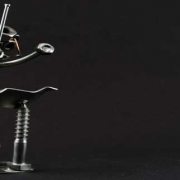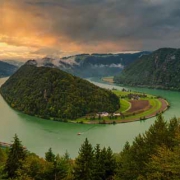“Sandy” and the power of distributed power generation
Superstorm Sandy has blackened out large parts of the American East Coast. Electricity generation was not the problem but rather power lines on wooden poles. Distributed generation offers a solution.
We all have followed the news on super-storm Sandy while it laid waste to a large swathe of the American North Eastern Seaboard. This time New York was hit and the world watched in disbelief. Still in the news, but much less observed outside the US is the massive breakdown of the electricity grid as a result of the storm. As winter hit those people very surprisingly, this little circumstance might hurt them much harder than the original damage from the storm.
While the world and even more US media discuss the effects of global warming and how all those horrible things could have been averted by the right kind of environmental policy, we take a closer look at what can be done to make energy infrastructure a little more resilient. Because one thing is sure – the blackout was not caused by power plants going down. It was copper lines suspended on wooden poles that tumbled and caused massive blackouts. Those wooden poles are vulnerable to natural disasters, or a terrorists if you want.
But isn’t the grid in this part of the world crumbling anyhow? Shouldn’t it have been renewed a long time ago already? All true but no good reason for what happened in the North East US. A superstorm like Sandy is sure to take out part of even the most modern grid except of course if it’s underground. The idea of making electricity supply dependent on wooden poles resisting wind and weather belongs to the last century. The idea of having just a few power generation spots covering wide areas of users is outdated too. We can do better now.
10 steps back now – we are not asking the right questions. Why is it a good thing to produce electricity in a central location and then warm hundreds of miles of copper lines before the electricity does what it is intended to do? Warming a home, powering an appliance, preserving a computer from breaking down, you name it.
Big electricity generation has been built the way it is now because in the past economies of scale were more important than transport losses or the vulnerability of the grid. Electricity generation was a big turbine thing. Hydropower only made sense with a huge infrastructure. The capital cost of those infrastructural monsters (a dam, a nuclear power plant, or a big thermal plant) made small-scale and distributed generation virtually impossible. In the case of nuclear, it was technologically impossible. Hydropower (a valley that could be blocked by a dam or a large river) does not exist everywhere so when the conditions for a power plant are right, you better build big. Thermal power plants on the other side did not have the efficiencies required at a smaller scale.
Nowadays, combined cycle power generation together with enormous advances in thermal efficiencies of generation equipment has turned this logic on the head. Natural gas-powered CCGTs are small, highly efficient, and can easily be installed in any basement of a large building or complex. If the building cannot be hooked up to the Natural Gas distribution grid for primary energy feedstock, a small LNG tank can be erected and the CCGT can be fed with LNG either from a small-scale liquefier or from a bulk break terminal nearby.
Mini and portable nuclear power plants able to feed 20.000 homes with energy are under development by several consortiums. They would complement the picture together with small-scale river turbines suspended in the free water flow. They do not need the expensive and unsightly dams anymore. Instead of a system with few huge electricity production plants and a huge grid delivering power to the point of use, one would have a network of small, mid-scale, and large power generational feeder points at many locations. Solar and wind would neatly be enveloped in such a system.
Much of the resulting electricity would be consumed at the point of generation with the remainder fed into the grid. The grid would also serve as a backup of last resort in order to shave demand peaks. This would change the nature of the grid from a pure distribution tool into a balancing tool between a myriad of entry and exit points. Not so different from the gas grids we know in Europe today.
The load on the grid would be greatly reduced. And also in case of failure of a single or some points due to – whatever – only a fraction of the consumers would be affected as opposed to whole swathes of the country in case a big plant or node goes down. Such an energy infrastructure would be much less vulnerable to a terrorist attack as well as a little side goodie. The 21st century has started to show teeth.


















You can put a CCGT in the basement? How small do they come?
The principle behind the CCGT is another heat converter fed by the exhaust heat stream from a primary heat converter. This is not very different from a turbocharger in a car. I need to be expansive on the term CCGT. I would like to include all equipment that turns combustibles into heat and movement with waste heat re-conversion. That describes it better.
A regular gas generator (from GE for example) can be combined in the same way and can be put into any basement. It’s only a question of economics and feedstock logistics.
I apologize for leaving room for interpretation.